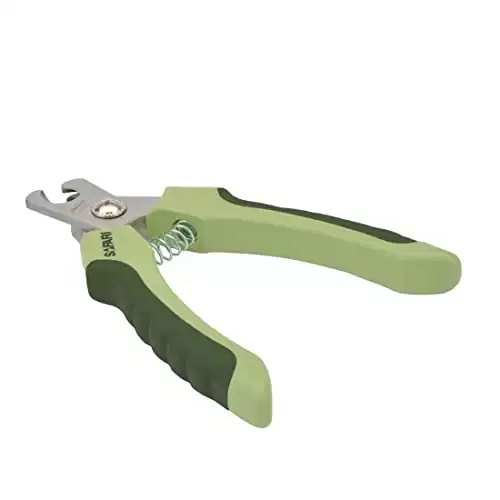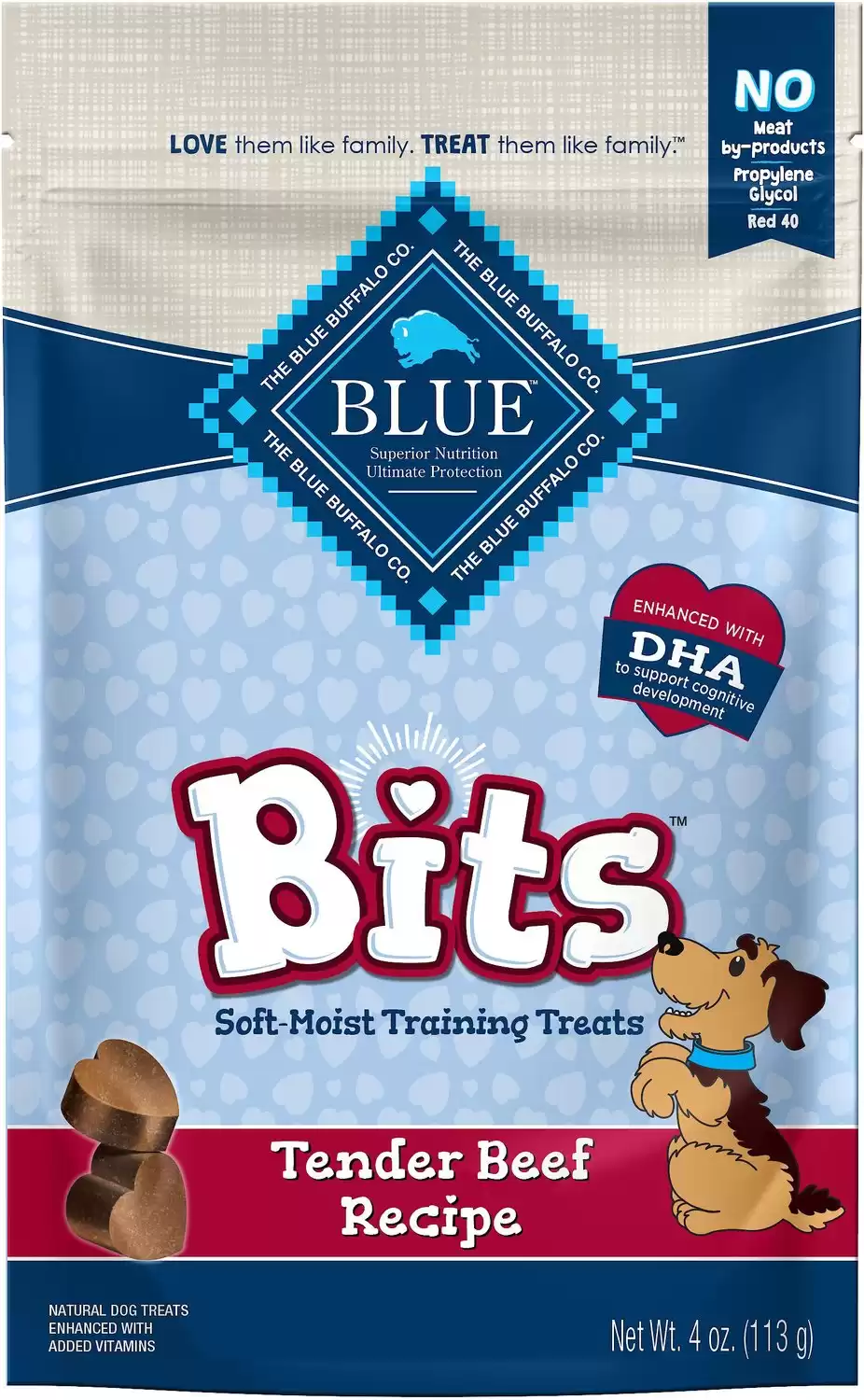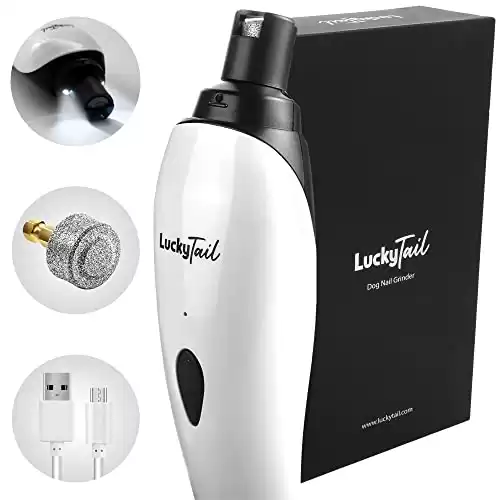Trimming your dog’s nails is a necessity. Some people think it is just for looks. However, If you don’t cut your dog’s toenails, their nails can grow too long, causing pain and improper walking habits that can lead to joint pain and muscle or tendon injuries over time. When your dog’s nail is too long, it hits the ground, putting pressure on the paw, splaying it out more than usual. Over a period of time, this unnatural positioning can lead to the aforementioned injuries.
Dog nails are different than ours. They have an inner part with living tissue and an outer hard shell. The inner part is called “the quick.” The quick actually has nerves and blood vessels in it. So if you accidentally cut too deep while cutting your dog’s nails it will bleed and may hurt your dog. Some dogs respond poorly to surprise or pain. They may yelp or even bite when they feel a sudden pain. So, how do you safely trim a dog’s nails without getting bit?
How to Safely Trim Your Dog’s Nails
Some pet owners simply do not want to deal with this task, so they take their dog to the groomer. Groomers should know how to properly trim a dog’s nails. When choosing a safe groomer, read their reviews online to make sure they have a good reputation in your community.
However, some dogs get very nervous about going to the groomer and would prefer to have their nails trimmed at home. You know your dog best, so you can make the choice that would best suit them.
What Tools Do You Need to Trim Your Dogs Nails?
In order to cut your dog’s toenails at home, you will primarily need a nail clipper. Check out our reviews of the best dog nail clippers to choose the best one!
There are a few different types of dog nail clippers:
- Guillotine dog nail clippers
- Spring-loaded nail scissors
- Plier-style nail clippers (best for dogs with thick nails)
- Dog nail clippers with a guard
- Dog nail clippers designed specifically for small dogs
Experts say you can also use human nail clippers for small dogs or puppies, but that they don’t let you see what you are doing as well as ones designed for dogs. There are larger nail clippers for larger dogs and smaller ones for small dogs. Get one that is recommended for your dog’s size.
You will also need styptic powder, flour, or cornstarch, and dog treats.
- Durable, sharp blades
- Features safety stop
- Non-slip grip on the handles
- Tension spring ensures smooth cuts
Getting Your Dog Accustomed to Nail Clipping
Before you even clip your dog’s nails, it’s important to make them feel comfortable with the idea. If you get a puppy, handle their feet often to get them used to having their feet touched. Even if you did not get your dog as a puppy, periodically bring out the nail clippers and just have them sniff them, so your dog will get used to the tool. When you do this, give your dog a treat so they associate positive things with the nail clippers.
Step by Step Guide to Trimming Your Dogs Nails Safely
- Bring your dog into a quiet room. Having no distractions is best.
- Hold your dog in place. You can hold a small dog in your lap. Large dogs might be a two-person job. One person should hold the dog in place while the other person clips their nails.
- Hold your dog’s paw in between your thumb and pointer finger. You should apply steady pressure, but not too firm.
- Gently push on the paw pad. This causes the nail to come out more.
- Move any hair out of the way if it is blocking your view.
- Clip the tip of the nail before the curve. If you clip after the curve you risk nicking the quick and causing pain or bleeding. Clip straight across the nail.
- If your dog has black nails, look for a white ring while cutting. That is a layer of the nail that surrounds the quick. If you see that white ring, you are getting too close and shouldn’t cut it any shorter. Some people prefer to bring their dogs with black nails to a groomer for nail clipping because it can be harder to see.
- If you do accidentally cut into the quick, use your styptic powder. Put a little bit on your fingertip and press it into the nail to stop the bleeding. Apply pressure for a few seconds. If the bleeding doesn’t stop after a few minutes, call your vet.
- Use a heavy-duty nail file to file down any sharp or jagged edges.
- Give your dog lots of yummy treats throughout the whole process. They will come to associate being patient and well-behaved during a nail clipping with treats.
- Designed for training
- For dogs of all sizes
- Includes DHA to support cognitive development
- Free from by-product meals, corn, wheat, and soy
- Also free from artificial dyes and colors
How Often to Cut Your Dog’s Nails
Most dogs need their nails clipped about once per month. However, if your dog is more of a lap dog who doesn’t run around that much, they may need more frequent nail trims. Dogs who do a lot of walking, especially on rough terrain, may not need nail trims at all. Walking around on the floor, especially on rough terrain like pavement, naturally trims a dog’s nails. Your dog’s nails should not touch the floor when they are standing. Use that metric to determine when it is time to cut your dog’s nails.
Dog Nail Clippers Versus a Dremel
Some people prefer to grind their dog’s nails down with a Dremel nail grinder instead of using a nail clipper. If your dog is seriously scared of nail clippers, a Dremel may be a good solution. However, in some dogs, the loud buzzing sound of the electric grinder causes fear. Using a nail grinder may be safer for some dogs. It is harder to clip the quick, and it is easier to use on extra-thick or hard nails. It also leads to a pedicure with smoother edges. If using a nail clipper isn’t working great for you, try a Dremel to see if that may be better for your dog.
- Cordless
- Very quiet
- Can be used with skittish dogs
- Ergonomic design
The photo featured at the top of this post is © iStock.com/Igor Barilo
Ready to discover the top 10 cutest dog breeds in the entire world?
How about the fastest dogs, the largest dogs and those that are -- quite frankly -- just the kindest dogs on the planet? Each day, AZ Animals sends out lists just like this to our thousands of email subscribers. And the best part? It's FREE. Join today by entering your email below.
FAQs (Frequently Asked Questions)
How to Safely Trim Your Dog's Nails
Step by Step Guide to Trimming Your Dogs Nails Safely
- Bring your dog into a quiet room. Having no distractions is best.
- Hold your dog in place. You can hold a small dog in your lap. Large dogs might be a two-person job. One person should hold the dog in place while the other person clips their nails.
- Hold your dog’s paw in between your thumb and pointer finger. You should apply steady pressure, but not too firm.
- Gently push on the paw pad. This causes the nail to come out more.
- Move any hair out of the way if it is blocking your view.
- Clip the tip of the nail before the curve. If you clip after the curve you risk nicking the quick and causing pain or bleeding. Clip straight across the nail.
- If your dog has black nails, look for a white ring while cutting. That is a layer of the nail that surrounds the quick. If you see that white ring, you are getting too close and shouldn’t cut it any shorter. Some people prefer to bring their dogs with black nails to a groomer for nail clipping because it can be harder to see.
- If you do accidentally cut into the quick, use your styptic powder. Put a little bit on your fingertip and press it into the nail to stop the bleeding. Apply pressure for a few seconds. If the bleeding doesn’t stop after a few minutes, call your vet.
- Use a heavy-duty nail file to file down any sharp or jagged edges.
- Give your dog lots of yummy treats throughout the whole process. They will come to associate being patient and well-behaved during a nail clipping with treats.
What Tools Do You Need to Trim Your Dogs Nails?
In order to cut your dog’s toenails at home, you will primarily need a nail clipper. Check out our reviews of the best dog nail clippers to choose the best one!
There are a few different types of dog nail clippers:
- Guillotine dog nail clippers
- Spring-loaded nail scissors
- Plier-style nail clippers (best for dogs with thick nails)
- Dog nail clippers with a guard
- Dog nail clippers designed specifically for small dogs
Experts say you can also use human nail clippers for small dogs or puppies, but that they don’t let you see what you are doing as well as ones designed for dogs. There are larger nail clippers for larger dogs and smaller ones for small dogs. Get one that is recommended for your dog’s size.
You will also need styptic powder, flour, or cornstarch, and dog treats.
Thank you for reading! Have some feedback for us? Contact the AZ Animals editorial team.









